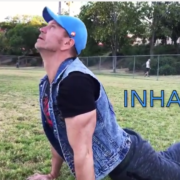Knee Pain In Sports Injury Rehabilitation
Knee Pain in Sports Injury
How do I treat a knee pain?
Typically I find knee pain pretty easy to work with because the limited planes that the knee works in. There are also several muscles that have to support the function of the knee. Any dysfunction of these muscles can result in knee pain.
First, we need to rule out major soft tissue or ligamentous injuries, i.e. no major tears in the meniscus, anterior/posterior cruciate ligaments, medial and collateral ligaments. This can be done via orthopedic testing and if necessary and MRI.
How does Applied Kinesiology help knee pain?
In our office, after assessing the magnitude of the knee injury, if appropriate Dr. Best, D.C. will muscle test all the muscles around the knee joint, as well as, the ankle and hip joints. A knee injury can result within the joint or from a problem that existed at the ankle or the hip joints. Proper firing of these muscles produces a synergistic concert of muscles flowing through patterns together during activity. Any dysfunction of these muscles will bring discord to joint resulting in pain and inflammation.
One of the most typical and highly overlooked muscles that result in knee pain is the popliteus muscle. This muscle located behind the knee gives us the ability to lock the knee before it goes into hyperextension, frequently causing anterior or medial knee pain. A simple test of the leg in flexion shows us whether the tibia is stable in its alignment with the femur. Activating a few muscles often brings balance back to the affected joint relieving pain and dysfunction.
Dr. Best, D.C. had the pleasure to be part of the recovery a highly decorated Olympic sprinter as she is known for being one the fastest woman alive. Applied Kinesiologic testing proved invaluable to assess and treat a knee/hamstring injury in order to help her quickly get back to racing and place in the top at the following World Competition.
Dr. Best, D.C. also had the pleasure to work on cyclists at the Olympic trials where synergy of muscle firing is crucial, frequently a piriformis syndrome was seen in connection to muscle imbalances at the knee. Finding and correcting these imbalances helped these athletes reach their peak performance.
How long does it take for knee pain to go away?
How long it takes to heal depends on if there is actual physical damage to the ligaments and/or meniscus, which could be weeks to months providing surgery is not necessary. However, many persons with mild to moderate inflammation and ‘turned down’ muscle tone, when activated and treated improve much more quickly within a few treatments to a few weeks. Knee pain is often the first symptom to go. However, that doesn’t mean the knee is completely healed … far from it. As with any joint healing, the ligaments and disc take much longer to heal than muscles especially when there are tears or adhesions. Have a good rehab program in place when you are feeling ready to get back into exercise. In general start with a small load to the joint for a week and if no pain ensues take up another quarter notch. Stop before the point pain. Continuing to aggravate a joint during the healing process will slow it down.
GIVE US CALL TO EVALUATE YOUR KNEE PAIN!







